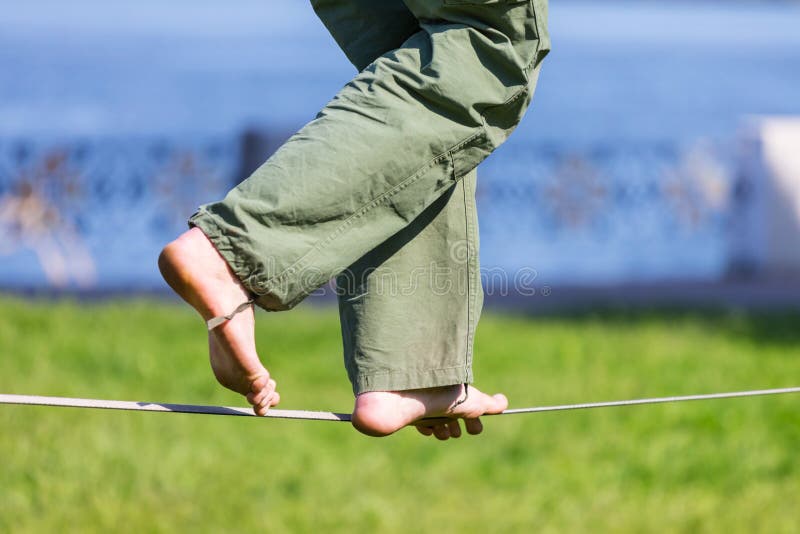

If you do not have any of trees to set up a slackline on, check out my guide to setting up slacklines without trees for some ideas. Which means they can not take the dynamic forces of being pulled from the side that a slackline will create as seen in the video below. Setting up a slackline on anything that can't handle the forces of someone walking and jumping on the line can cause the trees, poles, or pillars to fall.Īnother thing to keep in mind is most building columns, pillars or poles are only designed to handle a static load from above. Setting up a slackline on tree that are to weak or on something that cant handle the loads of slacklining.
#SLACK LINE HOW TO#
Want to learn more about the pulley systems used in the video above for longlining or how to get started check out my beginners long lining guide. In the video below you can see someone cutting down a stuck slackline, it mentions the comments that he broke his finger in a few places while doing this. Wipe down and clean ratchets of any dirt, sand or salt after every use.Īfter cleaning, you can spray down the moving parts with a silicone based lubricant. Periodically examine your equipment for signs of rust or damage. You can help to prevent a problem with your rigging gear by performing preventive maintenance. How to help avoid problems with your slackline ratchets and other rigging equipment. One way of getting a slackline down that will not detention is to put some lighter fluid on it, set it on fire and run like hell but even this method is not 100% safe. Long line slacklines require tremendous amounts of tension to get them to the proper tension if the rigging fails and does not let the user detention the slackline correctly do not ever cut the line standing next to it.īeing hit by the slackline that has much tension on it can cause fatal injuries. Improperly removing tension on a stuck Slackline If you are jumping or doing a bouncing trick when the line breaks you will take a hard fall onto the ground, having a crash pad under you will help to soften the fall.Ĭheck out my beginners guide to yoga slacking to find out how to get started. When a slackline snaps, it releases all the tension in the line turning it into a whip, the user or people standing too close to the line can be hit with this whip and become seriously injured. If the webbing is not set perfectly in the center of the ratchet, it can cause the webbing to rub on the ratchet and will eventually cause the webbing to start fraying on the edges of the line. Once a slackline webbing starts fraying it is significantly weakened and will be more likely to snap. The most common way you can damage slackline webbing is by improperly using a ratchet rig. Look for evidence of fraying, cuts or knicks if you find any discard the line and replace with a new one. Get into the habit of thoroughly inspecting the webbing for signs of damage when you set it up and take it down. Many factors can cause slackline webbing to fail, but that best way to prevent this from happening to you is by doing preventative maintenance. There are many ways you can back up your rigging equipment to keep it from flying at you in the event of a failure, the video below gives a few tips. I think the number one safety tip in this guide is always to tie back the ratchet, pulley or whatever rigging equipment you are using because if it fails, it can come flying at your or bystanders and cause severe damage. Always backup your slacklinesĪlways tie back your rigging equipment particularly if you are into longlining or tricklining because of the extreme amount of tension that you put on these lines If you are new to slacklining and are just practicing basic moves like walking the line or yoga lining with a ratchet system on a line that is not very long or not set up too high the risk of injury is significantly reduced.īelow are some ofthe most common ways slackline users are injured. The majority of slackline injuries come from improperly setting up a slackline or people overestimating their ability's while attempting to do tricks. Slacklines are great tools for balance training, but they have the potential to be dangerous.


 0 kommentar(er)
0 kommentar(er)
